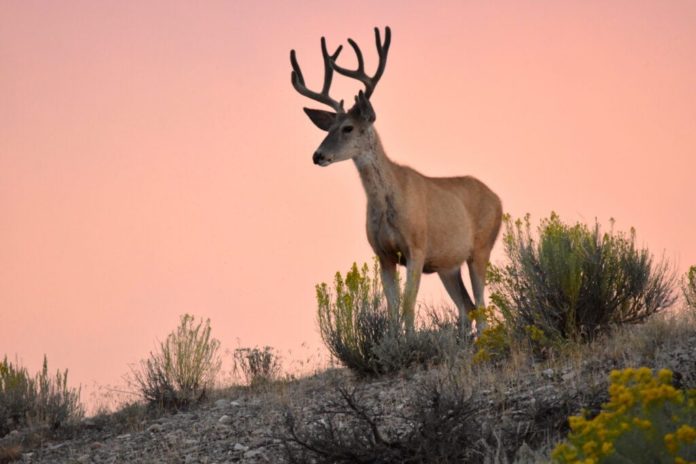Due to habitat concerns and population declines in Wyoming, wildlife managers decided to cut 8,000 tags for hunting pronghorn and 3,300 tags for hunting mule deer. At last week’s Game and Fish Commission season-setting meeting, WGFD terrestrial habitat supervisor Ian Tator delivered a report that focused mainly on the drought in Wyoming to support these cuts.
The Snake River Basin snow water equivalents are at 85 percent of usual levels, central areas of the state are at 90 percent or more, and the Cheyenne River Basin sits at about 68 percent, according to the Gillette News Record. The drought is possibly the worst in a decade. About 63 percent of the state has severe drought and Teton and Park counties and north-central areas east of the Bighorn Mountains are experiencing extreme drought.
“That lack of soil moisture is going to limit our future shrub growth, which is a critical component of big game winter diet,” Tator said. “If things don’t get better now, next winter we’re not going to have the shrub growth necessary to sustain those populations the way we want to.”
The lack of water and the subsequent lack of shrub growth will wreak havoc on pronghorn and mule deer populations, according to Doug Brimeyer, Wyoming Game and Fish Department deputy chief of wildlife in Jackson. Luckily, elk consume a broader range of plants and should be less impacted by the drought.
Read Next: Will Wildlife Survive Extreme Drought and Wildfires?
Disease also plays a role in the cuts as well. Pronghorns recently started contracting mycoplasma bovis and epizootic hemorrhagic disease. Mule deer also contract EHD. The dry weather elevates the risk of disease by providing near-perfect conditions for the gnat that transmits the disease to healthy pronghorn and mule deer.
Game and Fish’s estimates the 2021 post-hunt populations are 363,200 for pronghorns and 291,700 for mule deer. For perspective, that’s 84 percent and 61 percent of the statewide goals respectively. Again, in terms of population, elk numbers contrast.
“Our elk populations are doing extremely well across the state,” Brimeyer said.

Chronic wasting disease is also a major concern that led Game and Fish to propose adding new November buck hunting in the Laramie and Greybull areas. The agency hopes to slow the spread of CWD.
“Areas that have later buck hunts actually have a lower level of prevalence,” Brimeyer said. “If you can implement some buck hunts before the prevalence gets extremely high, you can influence the prevalence.”
After some pushback from some hunters—such as Zach Key of the Muley Fanatic Foundation who questioned the effectiveness of targeting bucks to combat CWD—the Game and Fish backed off the proposal. After the department walked back on the Laramie proposal, Brimeyer said the department “wanted to do a little bit more public outreach and get our public to understand the importance of why we’re proposing this.” That said, Brimeyer stood by the department’s plan, noting buck hunts in Wisconsin and Colorado have seen success with these types of hunts.
Read Next: Here’s What We Know About Chronic Wasting Disease (and What We Don’t)
The incidence of CWD in mule deer herds in Sublette and Wyoming Range are currently reported at five percent. The prevalence of the disease in the Sheep Mountain and Laramie Mountain herds currently hovers at 10 percent and 25 percent respectively. State wildlife officials possibly plan to return armed with study to show how well a fall buck hunt works to combat CWD.
“The only way we know if it’s going to work is to go out and design a monitoring protocol in one area and compare it to an area where we don’t implement something like that,” Brimeyer said. Until then, it will be a tough sell in the Laramie area.


